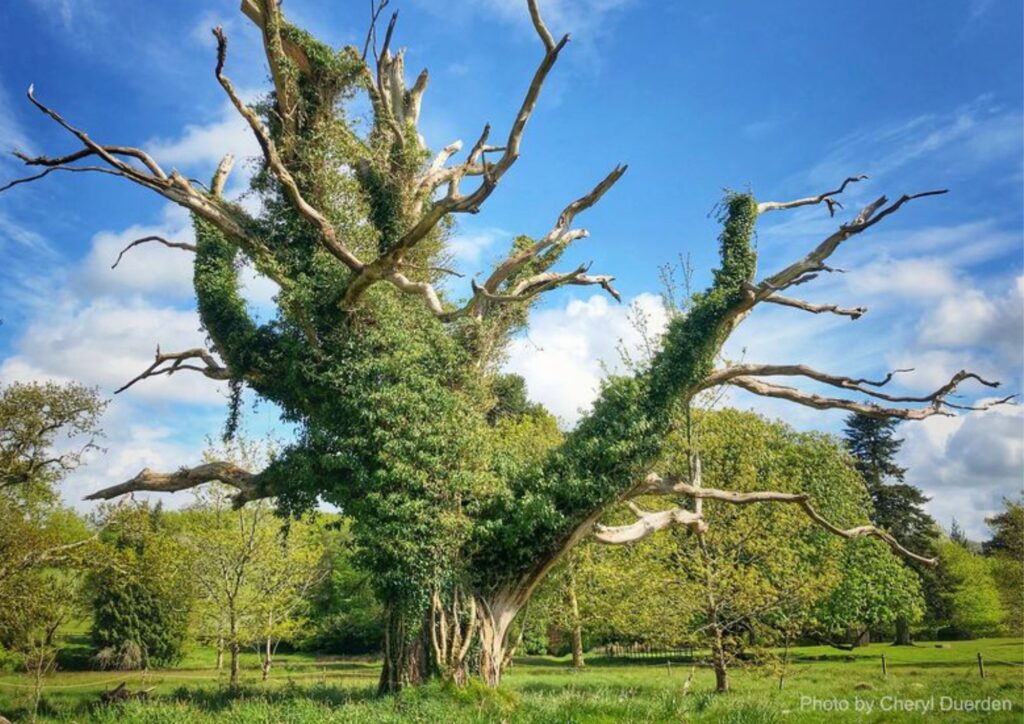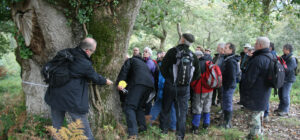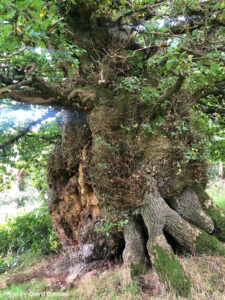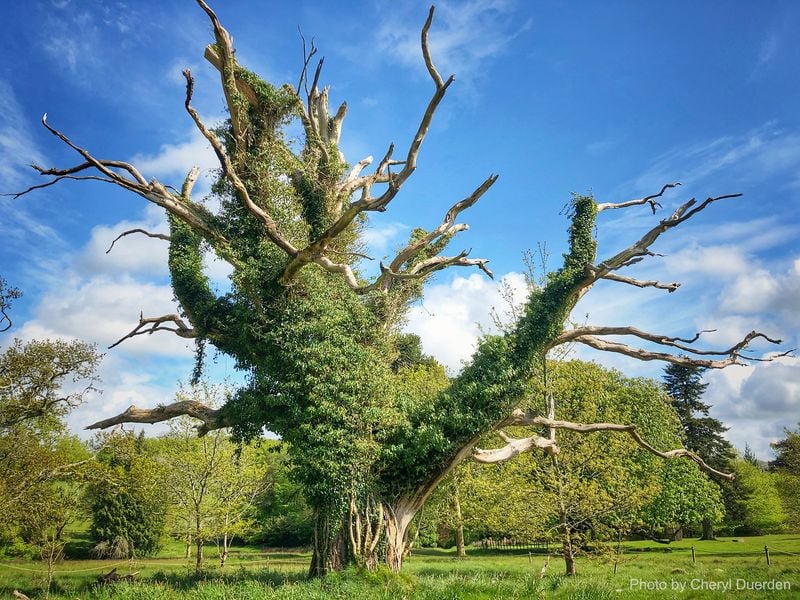What wildlife-rich looks like:
Dead branches, decaying wood, holes, cavities, splits, sap runs and loose bark. Ancient treesA tree that has reached a great age compared to others of the same species and has cultural, landscape or biodiversity value. Ancient trees are veteran trees, but not all veteran trees are old enough to be ancient. More with wide and hollow trunks. Features support a wealth of wildlife, particularly moths, beetles, flies, fungi, lichens, nesting birds and roosting bats. A range of flowering plants, trees and shrubs are close by and provide nectar and pollen for the moths, beetles and flies.




